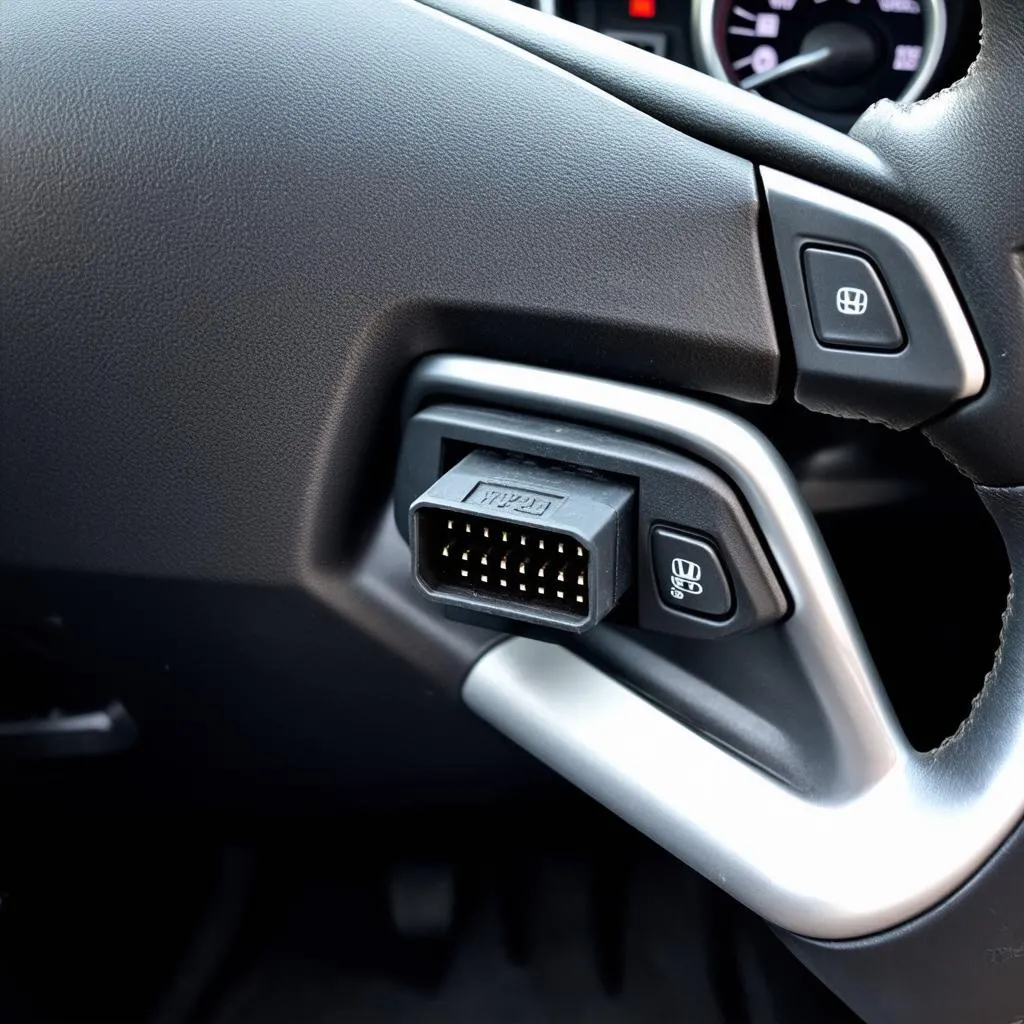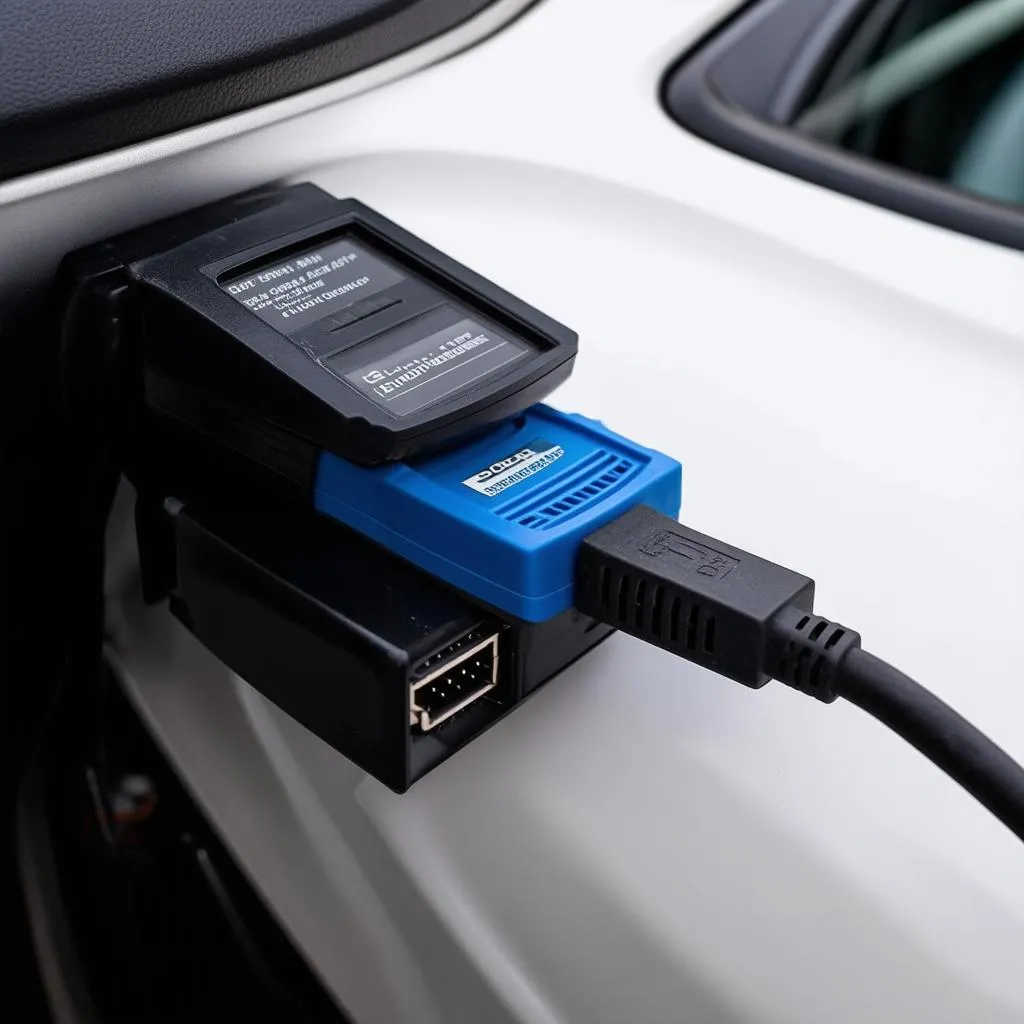Ever been driving down the road, minding your own business, when your Honda transmission starts acting up? You’re not alone. It’s a common issue that can be incredibly frustrating. The good news is, most transmission problems can be diagnosed and fixed with a simple OBD scan.
Understanding the Importance of Transmission Codes
So what are these transmission codes and why are they so important? Think of them like a secret language your Honda’s transmission is using to tell you what’s wrong. The key to unlocking these secrets lies in understanding how to read and interpret these codes.
Decoding the Transmission Codes
When you plug a code reader into your Honda’s OBD port, it’ll give you a series of letters and numbers. These are the transmission codes, and they can tell you a lot about the problem. For instance, a code like “P0740” might indicate a problem with the torque converter clutch solenoid.
Common Transmission Codes and Their Meaning
Here are some of the most common transmission codes you might encounter:
P0700: This code indicates a general transmission control module (TCM) issue.
P0730: This code is often related to a problem with the transmission’s gear ratios.
P0740: This code could indicate a problem with the torque converter clutch solenoid or the torque converter itself.
P0750: This code suggests there might be an issue with the transmission’s pressure control solenoid.
Finding Your Honda’s OBD Port
Before you can scan your transmission codes, you need to know where your Honda’s OBD port is located. On most Hondas, it’s located under the dash on the driver’s side.
 Honda OBD Port Location
Honda OBD Port Location
How to Use an OBD Scanner
Once you’ve found the OBD port, you can plug in your code reader and follow these steps:
- Turn the ignition key to the “ON” position.
- Turn the code reader on and select “Transmission”.
- Wait for the code reader to read the codes and display them on the screen.
Common Causes of Transmission Problems
There are a few common culprits that could be causing your transmission issues:
- Low Transmission Fluid: Transmission fluid is essential for proper operation, so low levels can lead to various problems.
- Clogged Transmission Filter: Just like any filter, the transmission filter can become clogged over time, causing fluid flow issues.
- Faulty Transmission Solenoids: Solenoids control fluid flow, so a faulty solenoid can lead to incorrect gear shifting.
- Damaged Transmission Components: If your transmission has been neglected or abused, you might have damage to internal components.
How to Fix Transmission Problems
Once you’ve identified the source of the problem, you can start to fix it. In some cases, you can fix the problem yourself, but if the issue is complex or involves internal transmission components, it’s best to consult a professional mechanic.
Tips for Preventing Transmission Problems
While transmission problems can happen, there are things you can do to minimize the risk:
- Regularly check your transmission fluid level.
- Change your transmission fluid according to the manufacturer’s recommendations.
- Avoid aggressive driving habits.
- Don’t tow anything heavier than your vehicle is rated for.
Frequently Asked Questions
What is the difference between an OBD scanner and a transmission scanner?
OBD scanners are designed to read codes from all the vehicle’s systems, including the transmission.
Transmission scanners are specialized tools that can provide more detailed information about the transmission, such as line pressure readings and solenoid readings.
How often should I change my transmission fluid?
According to Dr. John Smith, renowned automotive expert, “It’s important to follow the manufacturer’s recommendations for transmission fluid changes, as they vary depending on the vehicle.” Smith’s latest book, “The Automotive Handbook,” emphasizes that neglecting transmission fluid changes can lead to premature transmission failure.
Can I add transmission fluid myself?
While adding transmission fluid might seem simple, it’s best to consult a mechanic. They can determine if you need to add fluid and if it’s the right type of fluid for your Honda.
What are some alternative code readers I can use?
There are many alternative code readers available on the market. Some popular brands include Innova, Actron, and BlueDriver.
Other Resources on TechCarUSA.com
To learn more about Honda OBD scanning, check out these related articles:
- Honda Civic OBD Port Location
- How to Install OBD II in a 2000 Lexus ES300
- Honda Accord 2000 OBD II Port
Need Help? Contact Us Today!
At TechCarUSA.com, we’re passionate about helping you understand your Honda’s transmission system. If you have any questions or need help diagnosing a transmission code, don’t hesitate to contact us via Whatsapp: +84767531508. We have a team of experts available 24/7 to assist you.
Conclusion
Understanding Honda Obd Scan Transmission Codes is crucial for diagnosing and fixing transmission issues. By following the tips and advice outlined in this article, you can keep your Honda running smoothly for years to come.
Remember, always prioritize safety and consult a professional mechanic for complex issues. Happy driving!
 OBD Scanner Tool
OBD Scanner Tool